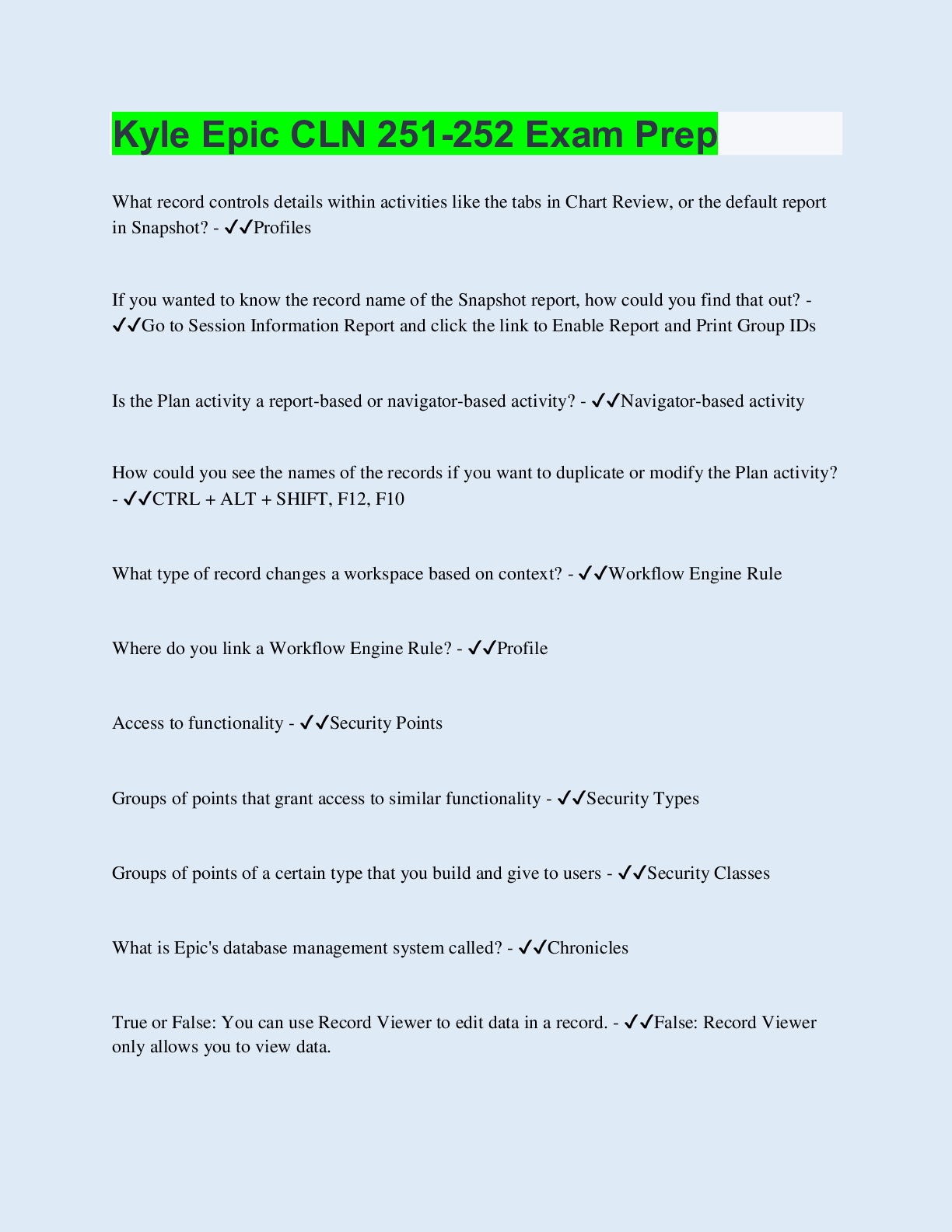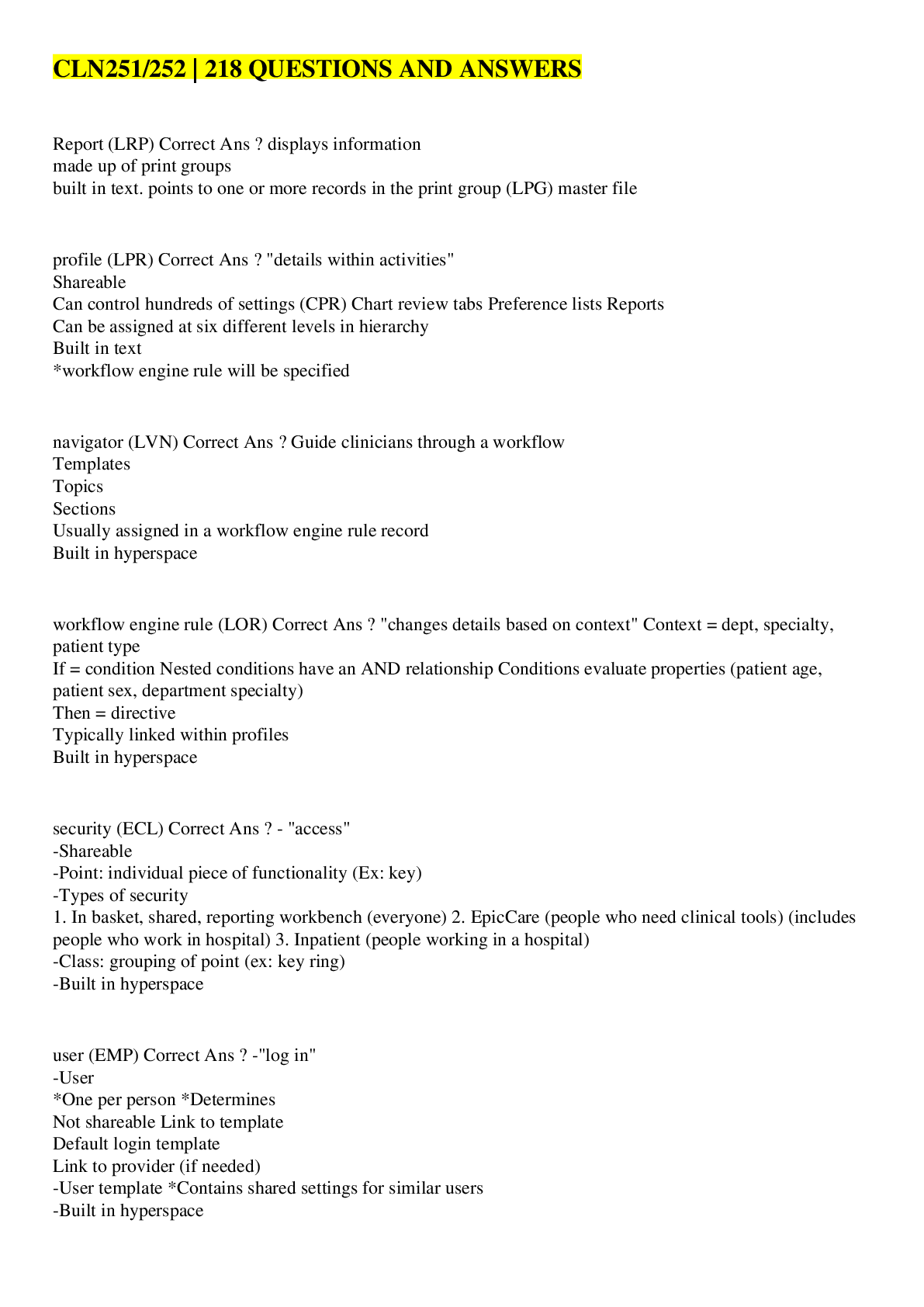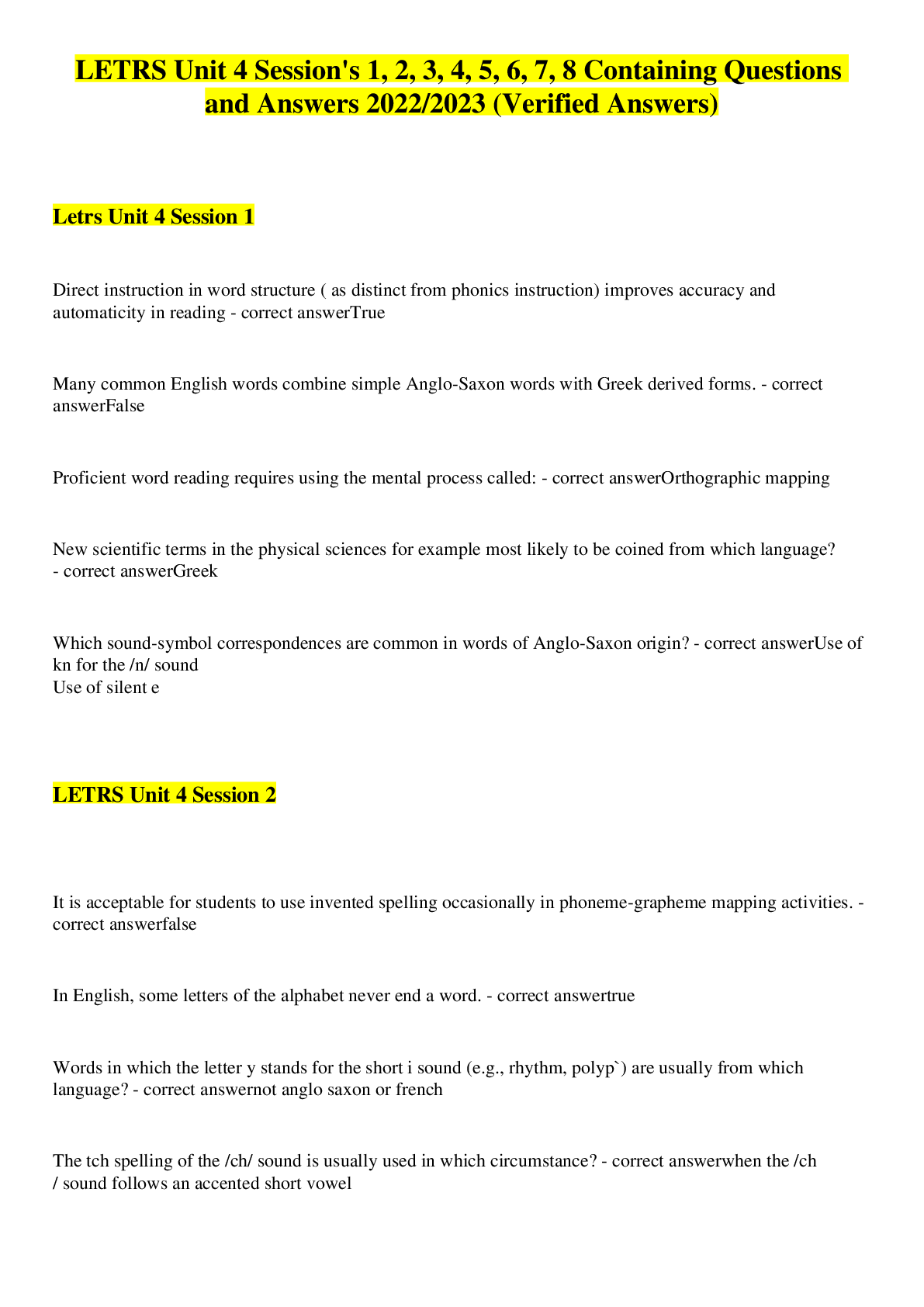Micro Biology > EXAM > Bio 171 Module 2 Exam (RATED A+) | Questions and Answer solutions | Portage Learning (All)
Bio 171 Module 2 Exam (RATED A+) | Questions and Answer solutions | Portage Learning
Document Content and Description Below
Bio 171 Module 2 Exam Exam 2 1. True or False: As movement requires energy, metabolism can be defined as a controlled set of biochemical reactions that occur in only motile organisms in order ... to maintain life. False. Metabolism occurs in all living organisms, not just those that move. 2. True or False: Enzymes slow down chemical reactions to conserve energy. False. Enzyme catalyze (speed up) chemical reactions. 3. What is a cofactor? And give a general example. A cofactor is a small chemical component that assists an enzyme during the catalysis reactions. A cofactor is usually metal ions. 1. Define catabolism. Catabolism is the process of breaking down larger molecules into useful energy sources. 2. Upon cellular injury, which metabolic process is involved during the growth and repair phases of the cell? The anabolic process would be active as it (by definition) is involved in the building up of small complexes into larger complexes. 1. Describe the energy transfer process relative to both ATP and ADP. ATP has the energy (phosphate group) to donate while ADP can accept energy in the form of a phosphate group. Thus, ATP can be reduced (ATP →ADP + Pi) while ADP can be built into ATP (ADP + Pi →ATP). 2. An organism that derives its energy (generates ATP) from photons of light is called a ? Phototrophic microorganism. An organism that derives its energy by removing electrons from elemental sulfur would be classified as a ? Lithotroph 4. A reactive intermediate would be present in which phosphorylation process? A. Photophosphorylation B. Substrate-level phosphorylation C. Oxidative phosphorylation B. The chemical compound losing the phosphate group is referred to as the phosphorylated reactive intermediate. 1. Identify the products of the following chemical equation: Glucose + 2NAD+ → 2 NADH + 2 Pyruvate + 2 ATP The products are to the right of the arrow: 2NADH, 2 Pyruvates and 2 ATP 2. What are the main two roles of glucose-6-phosphate in the cell? Glucose-6-phosphate, also known as G6P (1) prevents glucose from diffusing out of the cell as well as (2) serves as the signal molecule to the cell that glycolysis is about to begin. 3. True or False: During fermentation one means of eliminating pyruvate is by converting it into lactic acid. True. Pyruvate can be converted into either lactic acid or ethanol and then eliminated from the cell. 1. What is the primary byproduct of the TCA cycle? Select all that apply. A. NAD+ B. FAD C. NADH D. FADH2 C and D. The TCA cycle produces an abundance of reduced electron carriers (NADH and FADH2). 2. True or False. The reactants of the TCA cycle directly enter and fuel the electron transport system. False. The products of the TCA cycle (reduced electron carriers) enter and drive the production of ATP via the electron transport system. 1. In the absence of glucose, which of the following can be used as alternative energy sources? Select all that apply. A. Lactose B. Nucleic acids C. Carbohydrates D. Lipids A, C, D can all be used as alternative energy sources. 2. For the catabolism of proteins and lipids, which of the following enzymes are used? Select all that apply. A. Ligases B. Proteases C. Transferases D. Lipases B and D. Proteases breakdown proteins while lipases breakdown lipids. 3. True or False. The β-oxidation pathway catabolizes the fatty acid chains of lipids. True 1. Describe the relationship between chloroplasts and chlorophyll. Both chloroplasts and chlorophyll are associated with photosynthesis. Chloroplasts are the double membrane- enclosed organelles that contain the photosynthetic pigment chlorophyll. 2. True or False: Chloroplasts are specific to algae and plants. True 3. The process of photophosphorylation produces which of the following: select all that apply. A. ATP B. Glyceraldehyde-3-phosphate C. CO2 D. NADPH E. H2O A and D. 1. What is one of the main functions of light reactions? Similar to the electron transport chain, one of its main functions is to generate a proton concentration gradient to generate ATP. 2. True or False: Dark reactions can occur in the presence or absence of light. True. The term ‘dark reactions’ (also known as the Calvin Cycle) simply denotes the second stage in photosynthesis—dark reactions do not actually require darkness in order to occur. 1. How many turns (or repititions) of the Calvin Cycle are required to generate one molecule of glucose? Six. 2. Complete the following equation by placing the appropriate numbers where indicated. CO2 + ATP + NADPH + H20 → C6H12O6 + ADP + NADP+ 6 CO2 + 18 ATP + 12 NADPH + 12 H20 → C6H12O6 + 18 ADP + 12 NADP+ 1. Match the following reactions to its corresponding enzyme: 1. A + B → A-B 2. A-B → A + B 3. A- + B →A + B- 4. Ab + C → A + Cb A- Lyases B- Transferases C- Oxioreductaces D- Hydrolases E- Ligases F- Isomerases 1E 1. A + B → A-B Ligases 2A 2. A-B → A + B Lyases 3C 3. A— + B → A + B— Oxioreductaces 4B 4. Ab + C → A + Cb Transferases . [Show More]
Last updated: 1 year ago
Preview 1 out of 4 pages
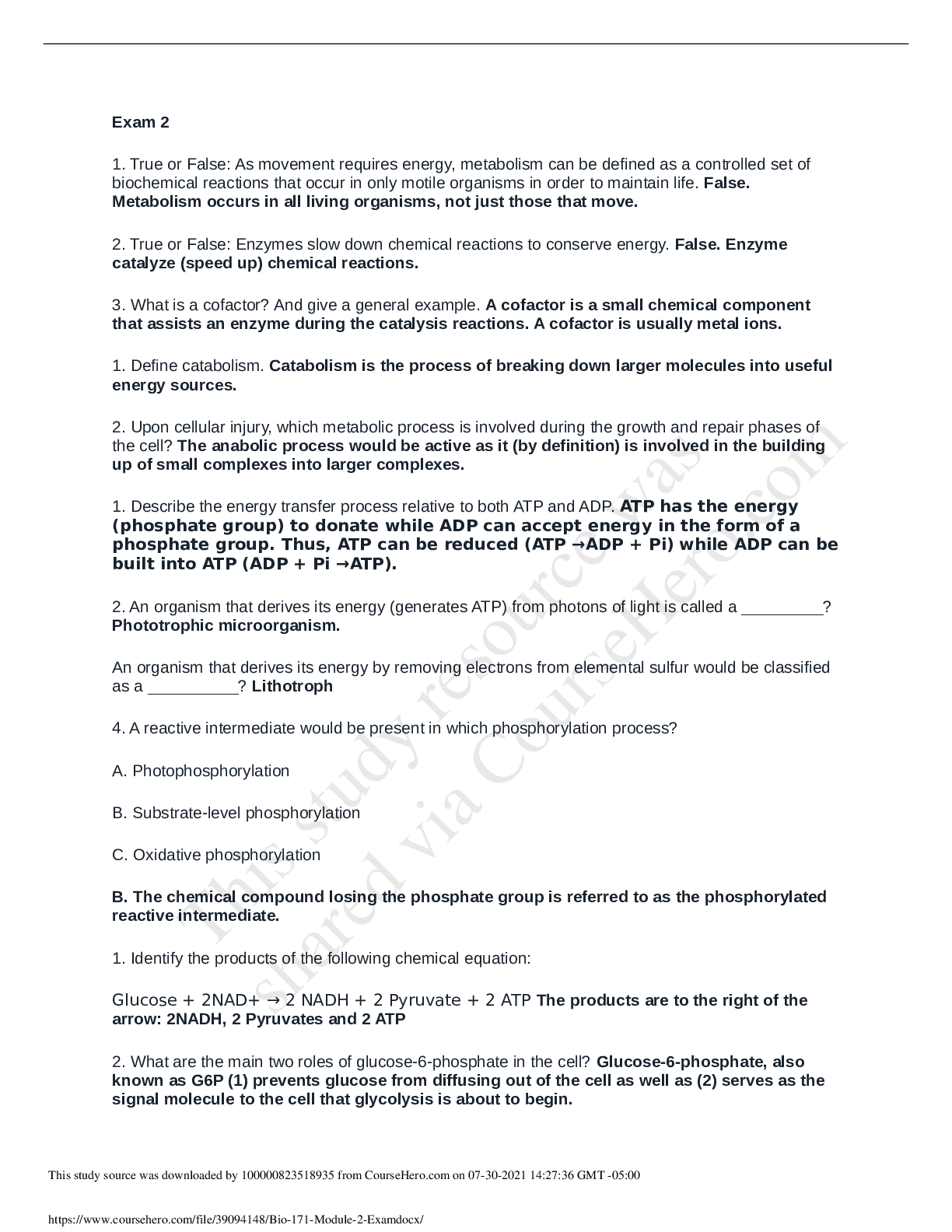
Reviews( 0 )
Document information
Connected school, study & course
About the document
Uploaded On
Aug 11, 2022
Number of pages
4
Written in
Additional information
This document has been written for:
Uploaded
Aug 11, 2022
Downloads
0
Views
69
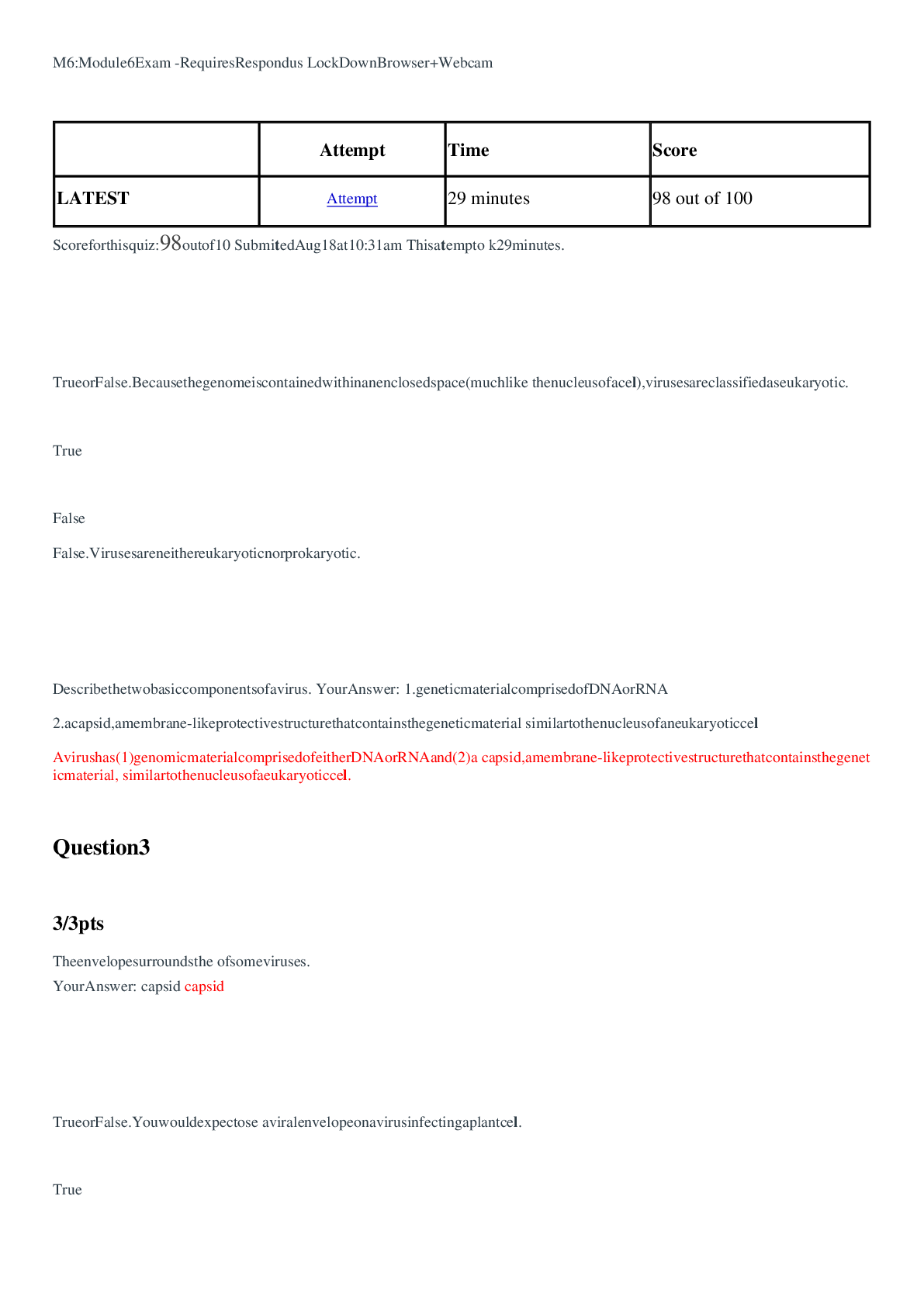




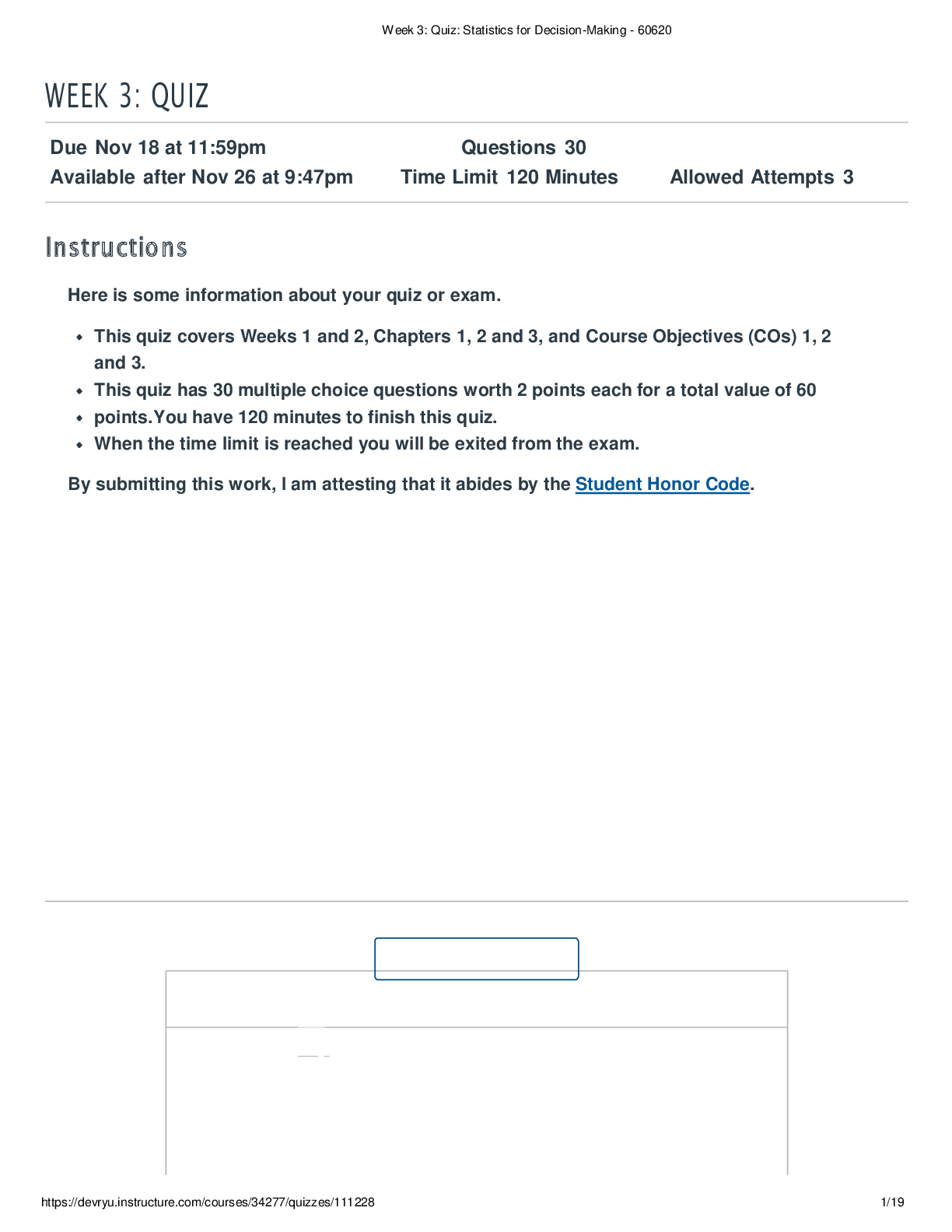

.png)












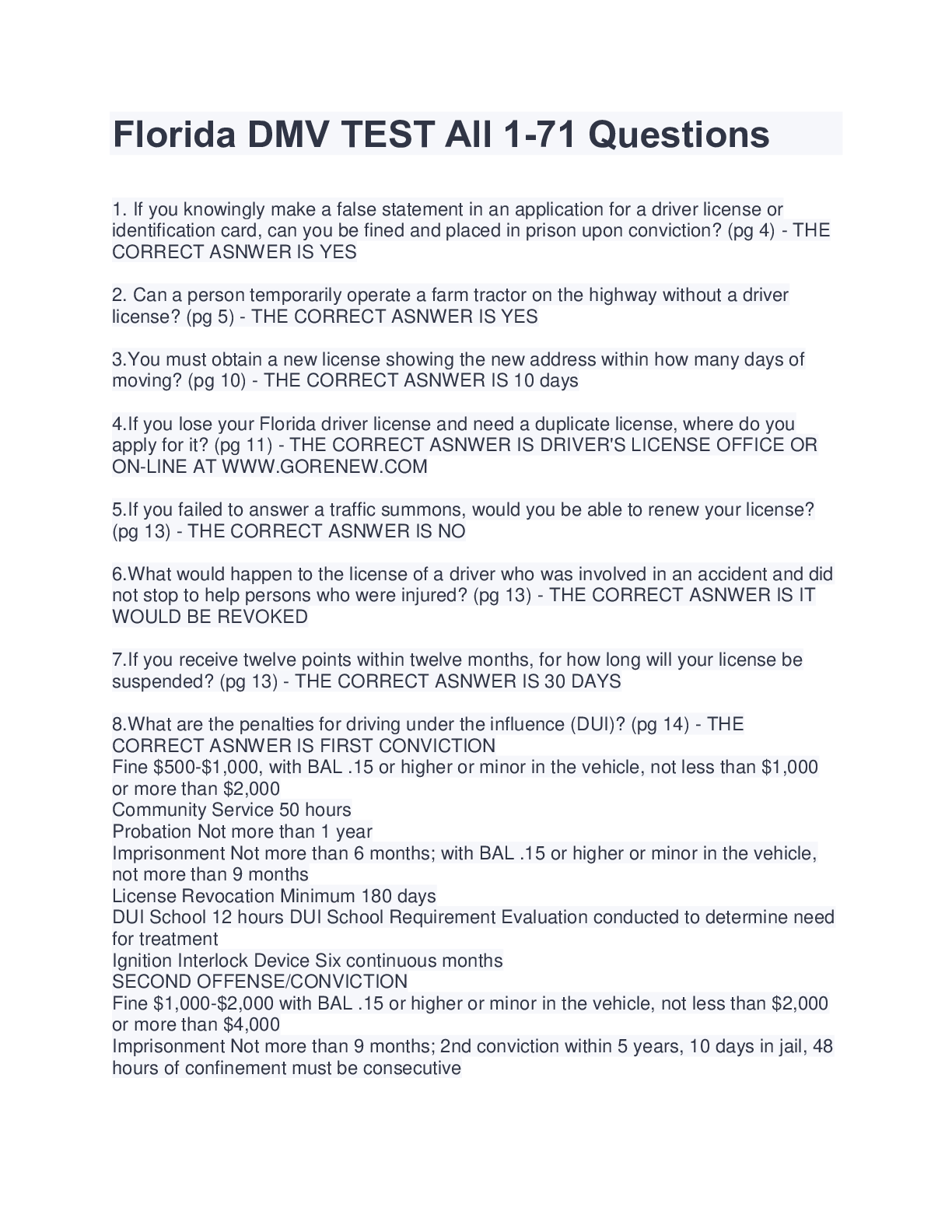
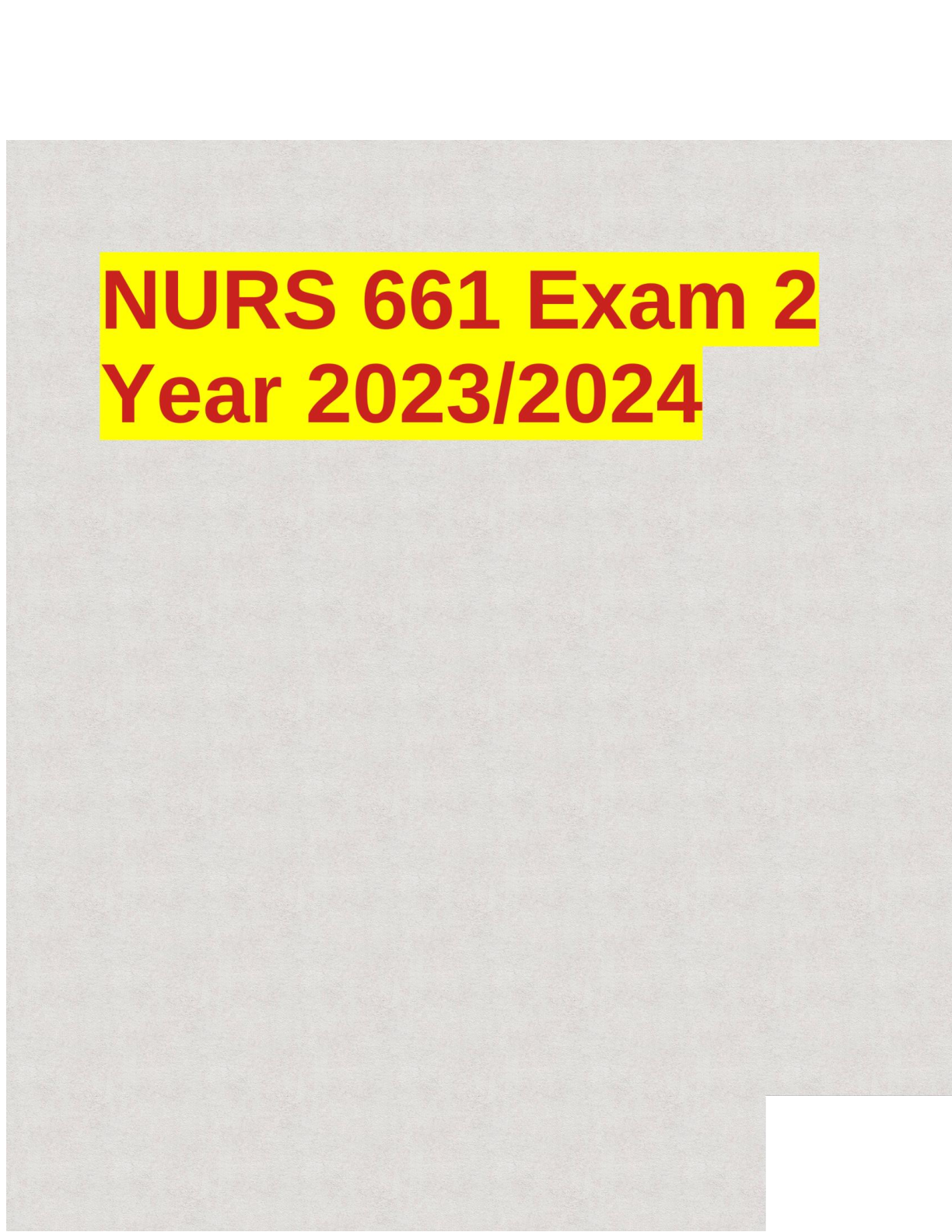

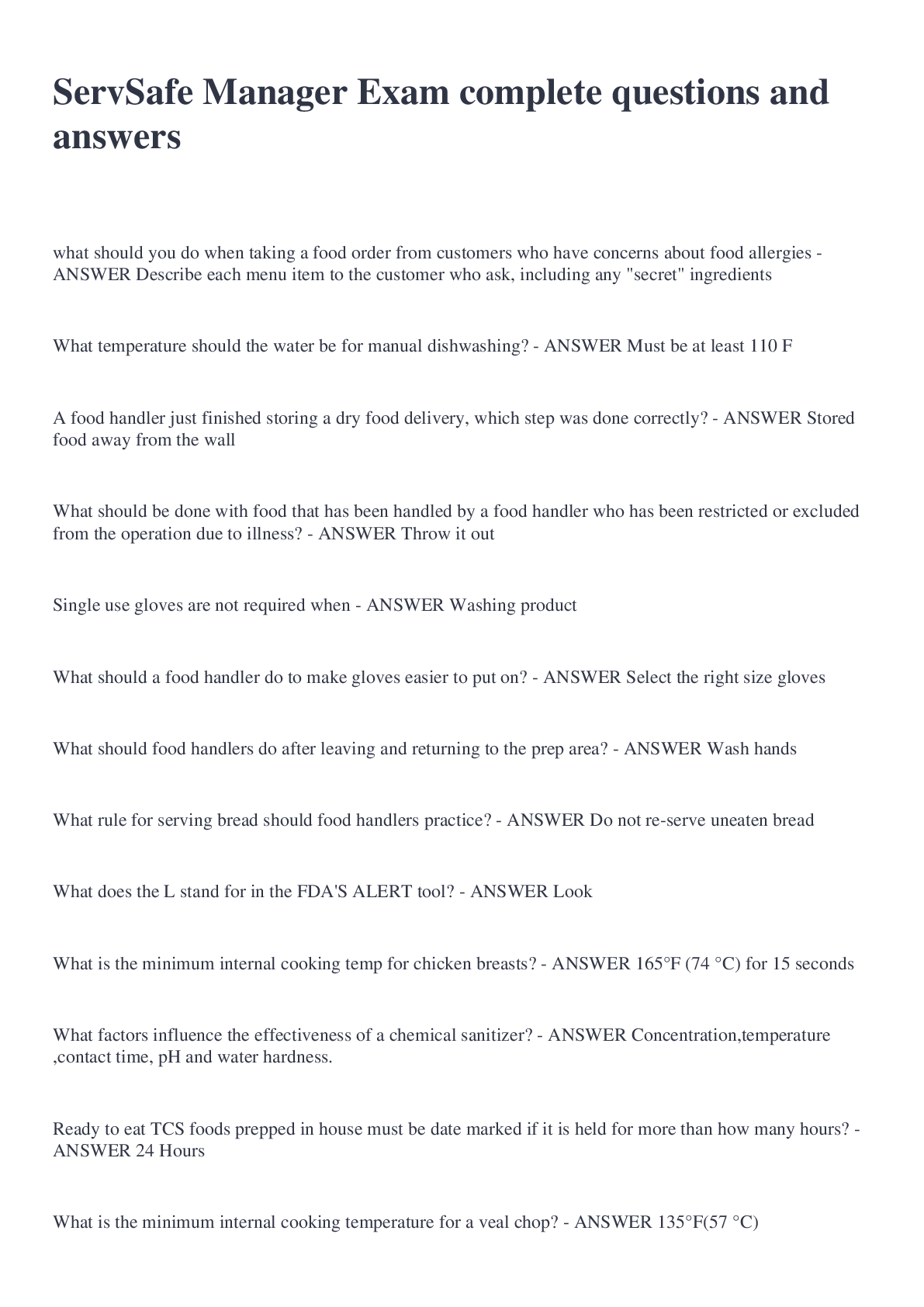

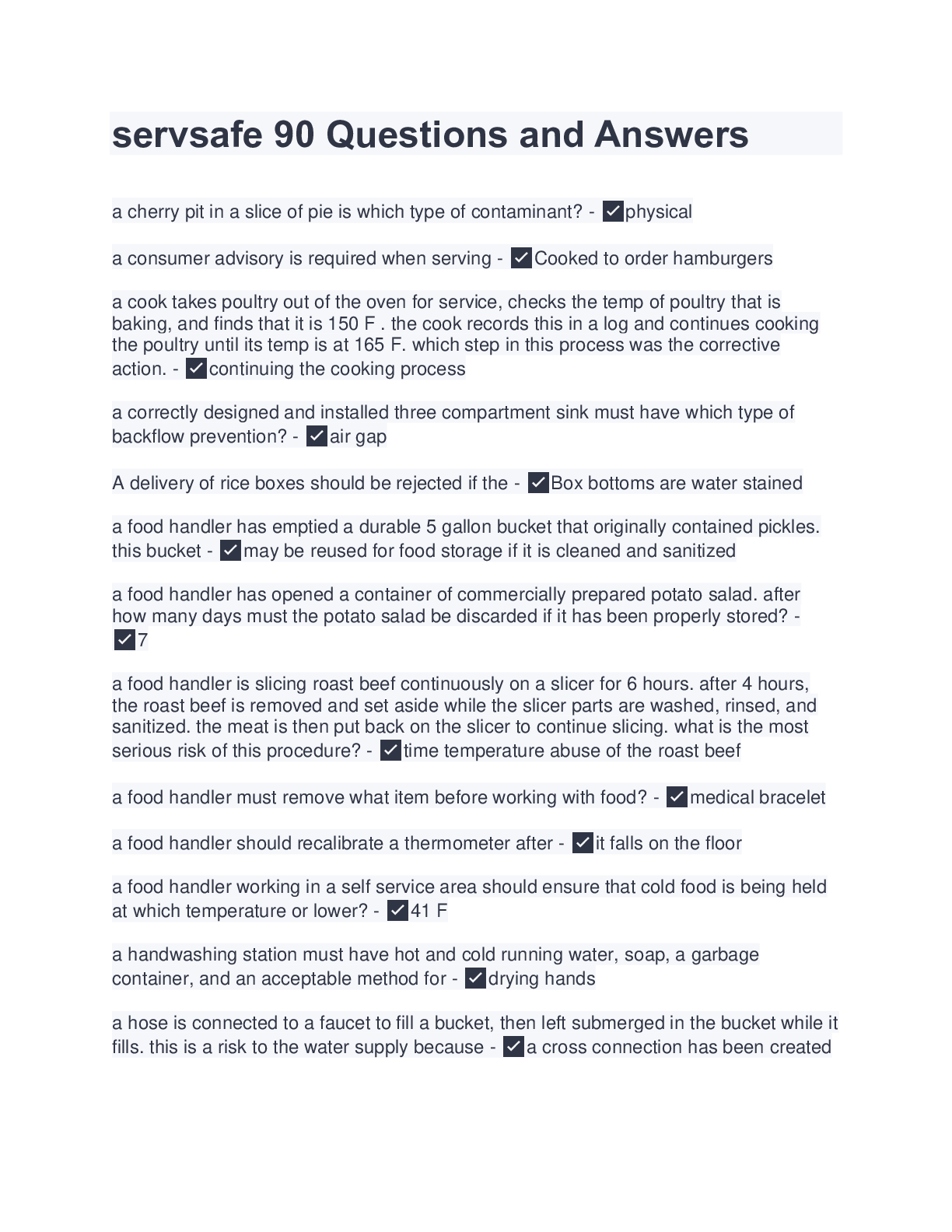
.png)


